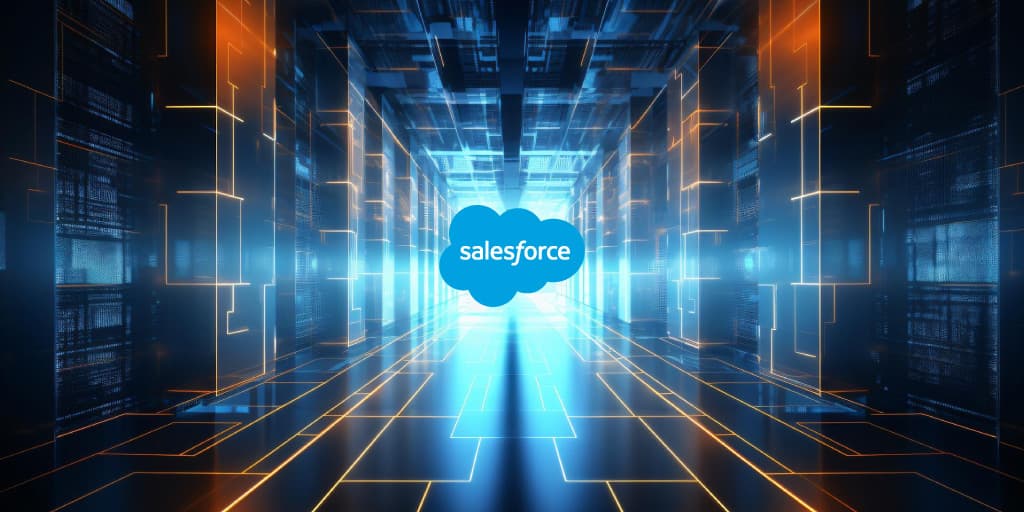Remember the days of the clunky flip phone? It did its job helping us make calls and send texts. But, compared to revolutionary smartphones, flip phones feel like a relic from another era. That’s how Salesforce Classic can feel next to the modern and powerful Salesforce Lightning Experience.
Salesforce Lightning offers a better user experience with a clean and intuitive interface compared to Classic. With Lightning, you can find information faster, customize your workspace, and work from any device.

What is Salesforce Lightning Migration?
Salesforce Lightning migration transfers your Salesforce organization from the Classic interface to the Lightning experience. The Lightning experience does many things. It helps users navigate the clean and intuitive interface, enhance productivity with its simple drag-and-drop model, access the CRM on mobile devices, and leverage advanced customization.
The Lightning experience offers many features unavailable on Salesforce Classic and leverages advanced Machine Learning and Artificial Intelligence capabilities.
Benefits of Salesforce Classic to Lightning Transition
In a Forrester report on the total economic impact of Salesforce Lightning, where Forrester interviewed several Salesforce customers who have migrated from Salesforce Classic to Lightning, found substantial financial gains.

- Sales efficiency savings: $1.59 million
- Development and support cost savings: $1,242,487
- Reduced developer turnover savings: $169,106
The primary benefits of migrating from Classic to Lightning are:
- Better UI and UX: The Lightning experience outperforms Salesforce Classic in terms of the workload involved in data entry, the intuitiveness of the dashboards, clean and clutter-free navigation, customization options, and visual graphs that enable actionable insights.
According to Salesforce, the Salesforce UI comprises five crucial elements that make it seamless, responsive, intuitive, trusted, and delightful. The transitions and navigation on this UI are smooth and can adapt to meet the needs of different user personas and languages. The UI is carefully curated with attention to visual details such as icons, spacing, colors, and contrasts.
- Improved Collaboration: Lightning offers several collaboration features that help teams communicate easily. Features like Chatter feeds for real-time communication, and Kanban boards for visualizing workflows help streamline tasks.
Chatter feeds in Salesforce Lightning help users share updates in real time. This ensures everyone is on the same page and details are maintained. The consolidated view of all the updates improves transparency, and whether it is information about a deal or a project, all the information is available in one place.
Kanban boards streamline project management by helping every stakeholder understand the different stages of a project or a work item in one setting. This makes it easy to track progress and identify bottlenecks. The Kanban board also simplifies prioritization by clearly presenting upcoming tasks.
- Increased Productivity: The intuitive interface eases navigation and saves time. Data visualization tools translate complex information into clear visuals for an immediate understanding and swift decision-making. The automation capabilities free up valuable time for strategic tasks.
- Mobile Access: You can access Salesforce CRM from your mobile devices and update or access any information.
Salesforce Lightning: 2024 Summer Release
The new Salesforce lightning experience release brings exciting new features:
- Use Static SOQL with Data Cloud objects for more direct data access.
- Manage flows more efficiently with the Automation Lightning App.
- See all enabled permissions on one page for easier user access management.
- User Access Summary shows a user’s permissions and access in one place.
- Collect user input to build a list of records on a screen with the Repeater component.
Also Read: The Ultimate Guide to Agentforce: Everything You Need to Know
Meet LevelShift: Your Trusted Partner for a Worry-Free Salesforce Lightning Migration
Migrating to Salesforce Lightning offers a wealth of benefits for your organization, from an improved user experience and increased productivity to enhanced data visualization and better collaboration. However, a successful migration requires careful planning and execution. The Lightning experience readiness check in Salesforce is a valuable tool for the transition.
But navigating the complexities of a Salesforce migration doesn’t have to be a do-it-yourself project. LevelShift is a Lightning-accredited Salesforce partner that can help you with Salesforce lightning migration. From assessing your readiness to customizing Lightning for your specific needs, LevelShift ensures a seamless and successful migration.
Steps to Migration: Salesforce Classic to Lightning
Here’s how LevelShift Plans and Implements the Classic to Lightning Migration.
- Our experts assess your business needs before embarking on the migration. At this stage, we work with you to understand your business goals, the scope of migration, and the roadmap. We leverage the Lightning experience readiness report to assess potential roadblocks concerning compatibility, user adoption, and migration effort.
- Next, we plan the migration based on crucial aspects such as integration, release, and training plan.
- We develop, test, and integrate to implement the migration. This is followed by augmentation and testing to implement new features, optimize existing processes, and perform any necessary cleanup.
- We provide comprehensive training and documentation to equip your teams.
- As the final step, we deploy in key stages: initial rollout, revised rollout, and phased rollout.
Are you ready to experience the power of Salesforce Lightning firsthand? Contact LevelShift today to discover how we can transform your CRM from Classic to Lightning.



![Top New Features in Winter ’26 Release: [Service Cloud in Lightning]](/_next/image?url=https%3A%2F%2Fresources.levelshift.com%2Fwp-content%2Fuploads%2F2025%2F11%2Fcloud-computing-technology-online-data-storage-business-network-uds-e1762163106381.jpg&w=128&q=75)
![Top New Features in Winter ’26 Release: [Salesforce Platform in Lightning]](/_next/image?url=https%3A%2F%2Fresources.levelshift.com%2Fwp-content%2Fuploads%2F2025%2F10%2FWinter-Release-Sales-Platform-In-Lightning.jpg&w=128&q=75)

![Top New Features in Winter ’26 Release: [Sales Cloud in Lightning]](/_next/image?url=https%3A%2F%2Fresources.levelshift.com%2Fwp-content%2Fuploads%2F2025%2F10%2FSales-Cloud-Winter-Release-1.jpg&w=3840&q=75)
